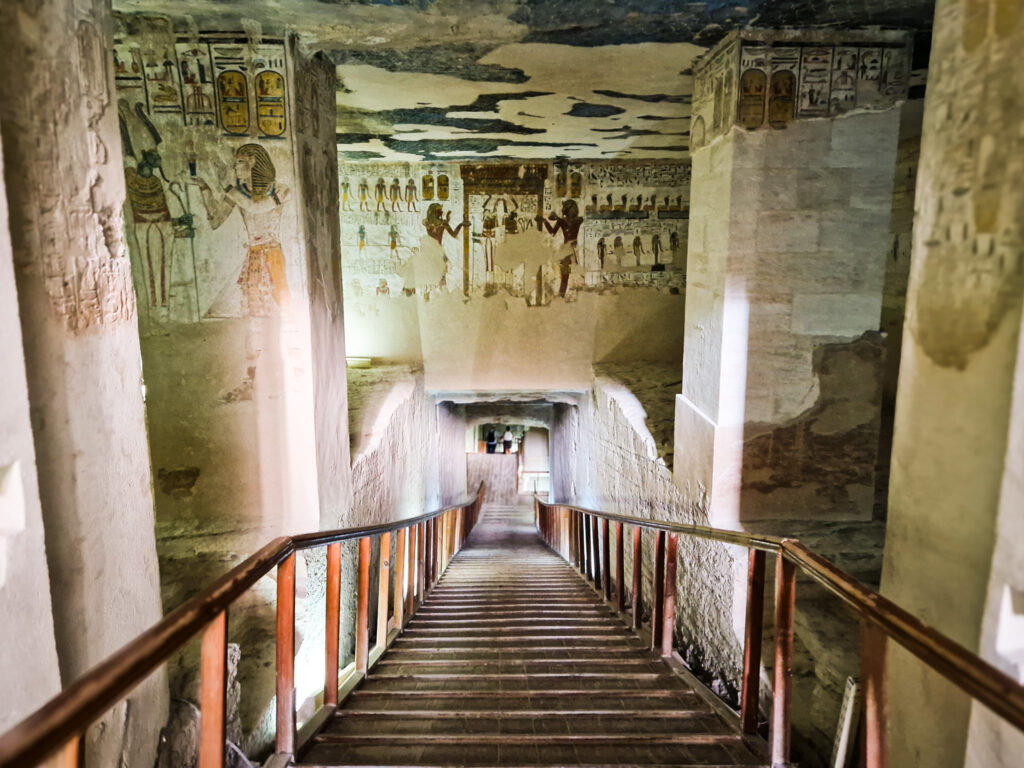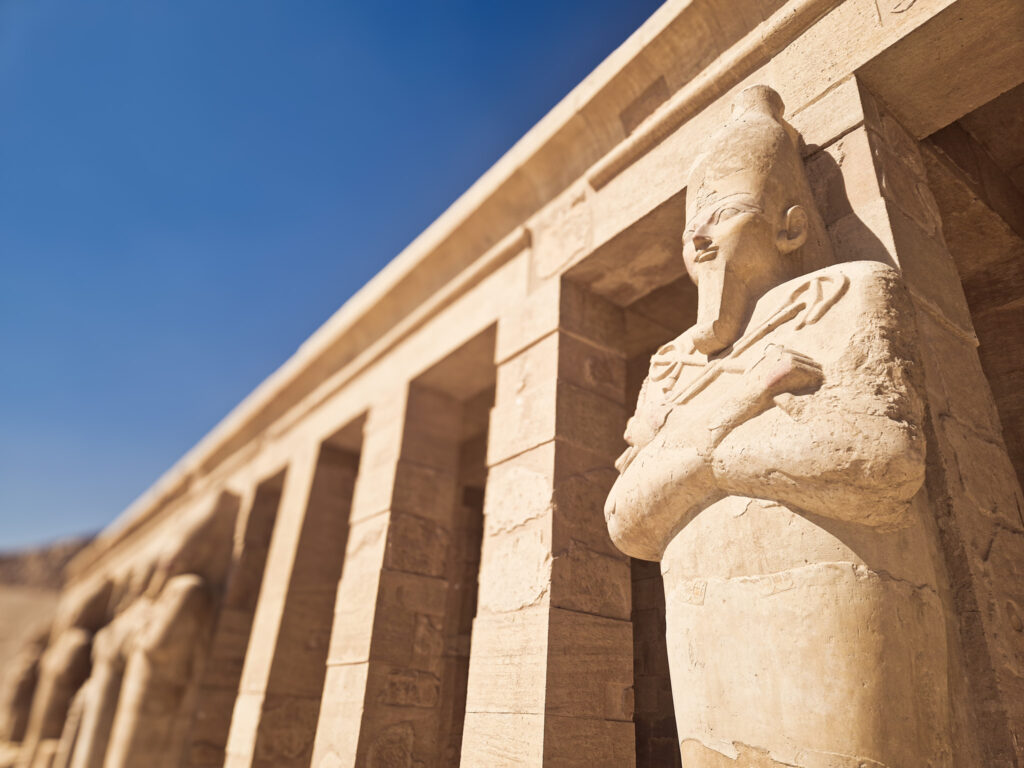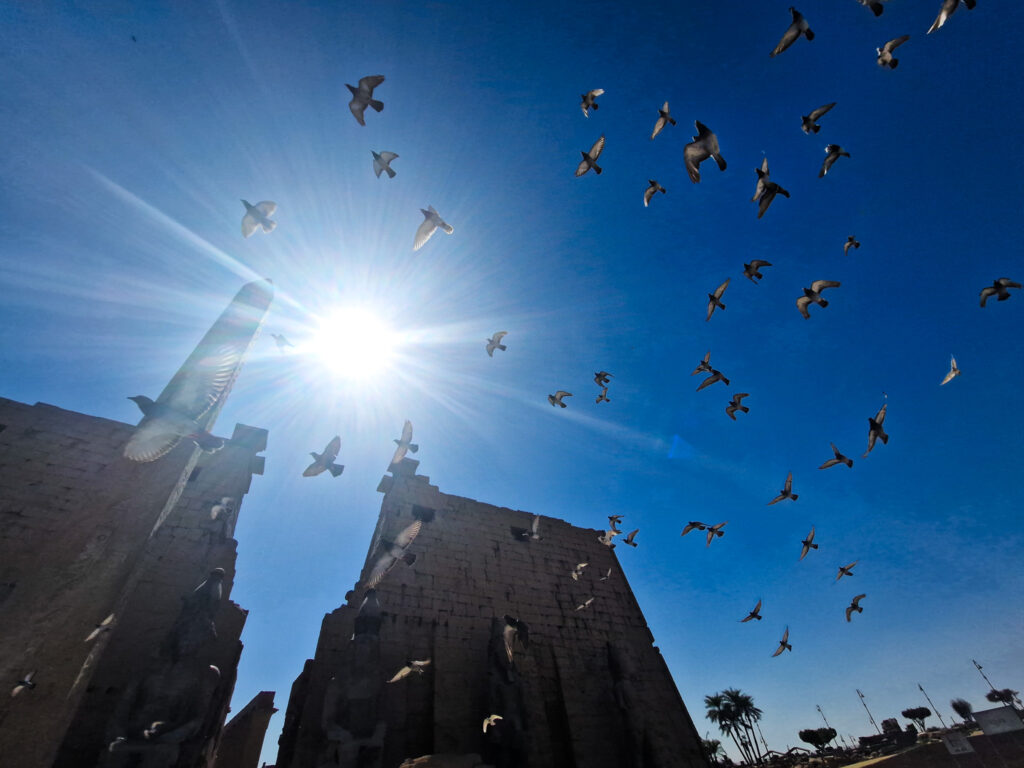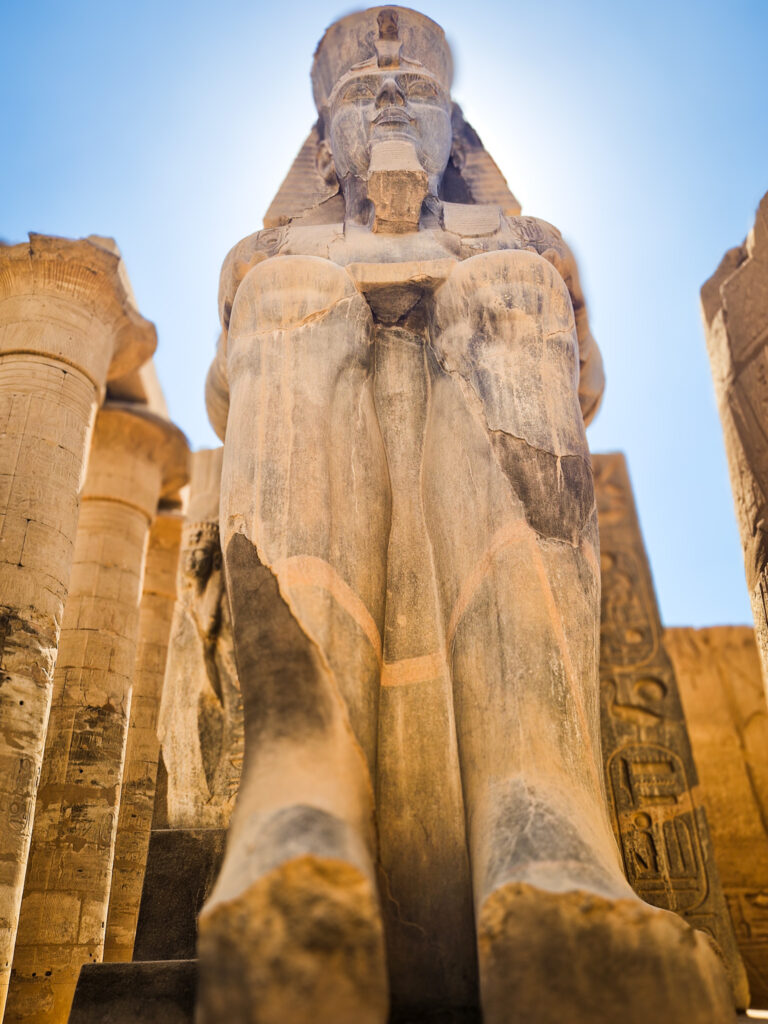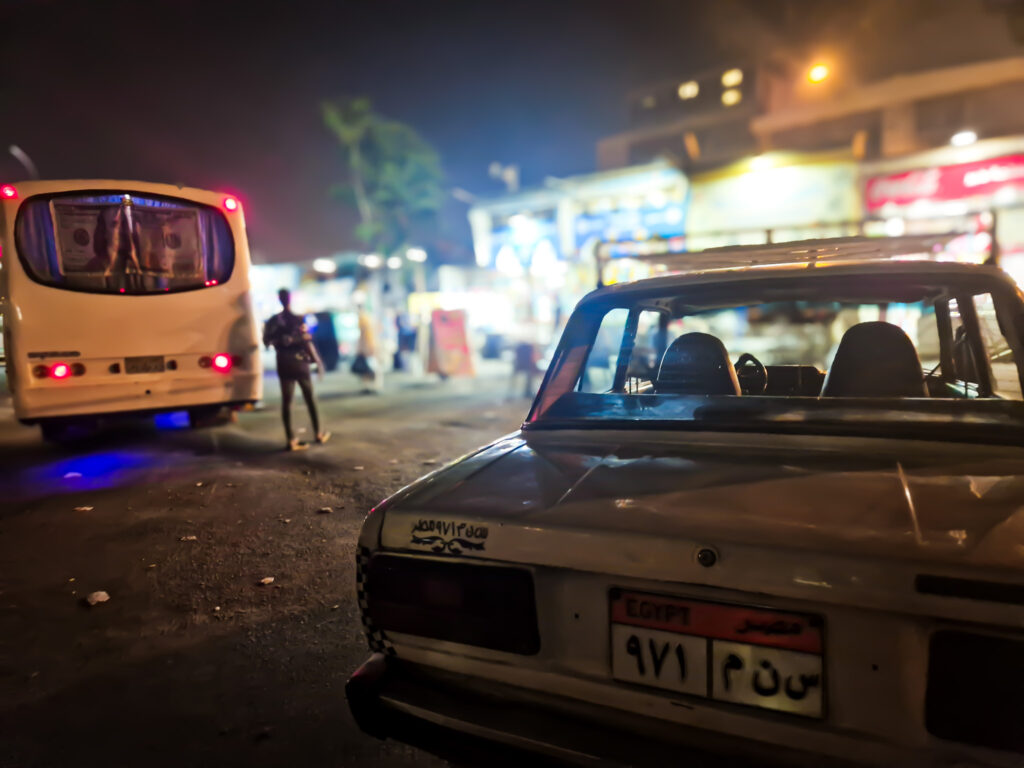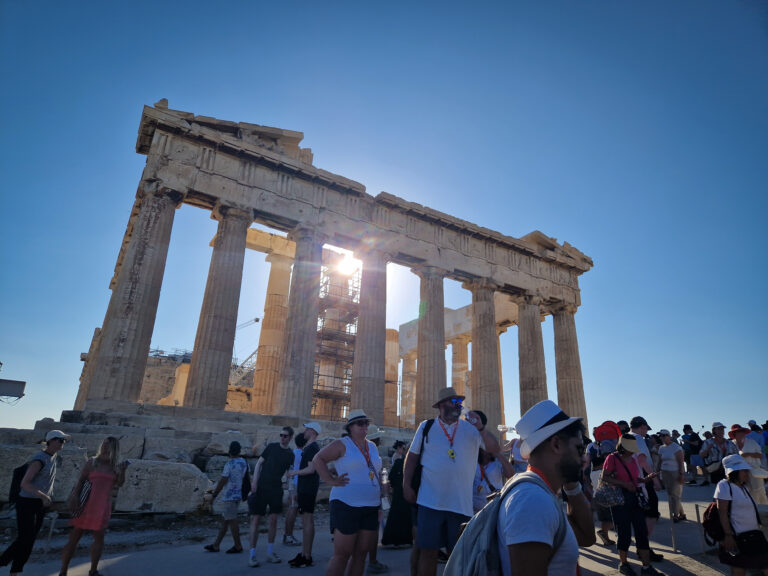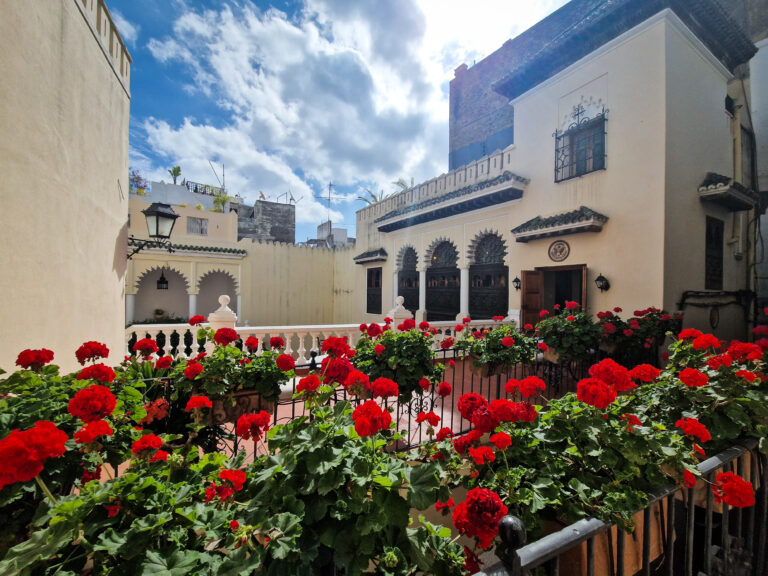Luxor: The New Kingdom
The Train Station
We’d been waiting at the train station in Cairo for almost an hour now, and had it not been for Mostafa’s offer to wait with us, we would have had no way to know if we had missed our train or it was simply running late. Dozens of them rumbled in and out – some commuter trains where Egyptians just getting off work were hopping on to make their way home through the bustling metropolis this evening, others departing for more far-flung places like Alexandria, Asyut, and Aswan. The platforms smelled of hot metal and diesel, that particular tang of old engines baking all day under a Cairo sun.
Ours was the direct overnight train to Luxor, one we had booked online, but since then had no record at all of having booked, other than the assurance of someone in a trailer-looking office earlier in the day who simply said: “We have your tickets.” I looked down at the printed screenshot of the checkout screen when I booked the ticket, which I had brought with me exactly for a scenario like this, but beyond that, we just planned to board the thing and hope for the best.
The Old Train South
Finally, at half past eight, an old train pulled into the station. It looked like it had a tentative grip on the tracks and was overdue for a paint job by about thirty-five years. I looked at Kent and smiled – this is what would sling us down to Luxor overnight along the banks of the Nile in the Egyptian darkness – what could go wrong?
To my relief, we were waved by when I flashed the “proof” that I actually had booked this trip, likely because I looked the part: a tourist boarding an overnight train for Luxor with an overloaded backpack and a look about me that probably screamed that I didn’t know what I was doing. We boarded, found our rooms, and hoped for the best.
We settled into our rooms for the night – they were simple, about what I had expected: a fold-down bed, small desk, a few lights among the several that worked, and luckily some outlets that I could use to charge a device overnight. I had heard from other travelers that the bathrooms on the train should be avoided at all costs, and I dreaded the trip, if brief, that I knew had to happen at some point before the night was over.
The train left the station and I felt relief and a sense of security that we’d managed to board the correct one, and now all we had to do was wait and we would wake up in Luxor. Our guide had told us that catching a quick flight down to the city was an easier and quicker option, but my thirst for a little adventure and cheapness led me to book us this ticket instead – not to mention, if Jenn and the boys were along with me, a journey like this would not have been even a discussion.

I awoke to a knock at the door, warning that we would be arriving in Luxor in 45 minutes and taking orders for a coffee or tea. I gathered my things and sipped the terrible coffee, the palm trees glowing pink out the window in the rising sun as the train chugged along sluggishly in the final minutes before arriving at the station.
Luxor is often called the world’s greatest open-air museum as it preserves, in one compact area, the architectural, artistic, and religious achievements that defined the golden age of ancient Egypt. In ancient times it was Thebes, once the capital of Egypt during the height of its power in the New Kingdom. By the time Luxor became the center of Egyptian power, the Pyramids of the North were already a thousand years old – underscoring just what an incredible and enduring civilization ancient Egypt truly was.
Across the River to the Dead
We met our guide Ahmed, who greeted us coolly with a handshake. “Welcome to Luxor, habibi,” he said, and the car was off across the Nile to the Valley of the Kings. It all came surprisingly quickly. The centuries that this place had remained hidden from disturbance belied the fact that it was only minutes out of town by car.
Why then, I wondered, was it left undiscovered so long? Over the centuries, tomb robbers would find most of the opulently decorated tombs, but they were well hidden and very secret from contemporary Egyptians.
The Valley Opens Before Us
We parked outside the site and were shuttled over to the entrance in a golf cart, a bit of an anticlimactic way to discover it after having carried it in my mind through the stories of Indiana Jones or National Treasure: some impossible mystery only accessible to the greatest adventurers. But alas, we were ushered in, given a few words of guidance by Ahmed, and then set loose.
There are over sixty tombs in the Valley of the Kings – some uncovered more than a century ago, others revealed only in the last few decades. With our limited time, we chose to visit what we had heard were among the most impressive and worthwhile: Seti I, Ramses II, and Tutankhamun.

Down into the Quiet
The tunnels sloped deeper and the air cooled, and in that hush the walls seemed to wake. Every surface carried the work of hands that hadn’t touched daylight in three thousand years. The tombs were technically empty, but the weight of the place you could still feel. It felt less like walking through a burial site and more like trespassing in the private dreams of pharaohs.
Outside, the cliffs burned in the rising heat and the desert wind scraped along the rock. I found myself trying to imagine the moment they were sealed for the last time – the last torch lifted away, darkness swallowing the corridors that were meant to carry a pharaoh into eternity.
The Temples and the Long Ride North
By late morning, the sun was climbing hard and we crossed back over the river toward Karnak, where the scale of Egypt shifts from intimate to impossible. Karnak isn’t a temple so much as a city built to honor gods who expected nothing less than ambition on a colossal scale. Rows of columns thick as sequoias. Reliefs carved with the confidence of a civilization that assumed its legacy would outlast sand and wind (which it has).
We finished the day at Luxor Temple, smaller and more graceful, a kind of exhale after Karnak’s massiveness. One of the twin obelisks is gone: the empty pedestal stands there like a missing tooth. Its partner now stands in the Place Vendôme in Paris, polished and postcard-famous, while this one holds the space it left behind. Somehow the absence sharpens the beauty of what remains.
As evening set in on Luxor, we found ourselves back where we began the day: the train station – ready to catch the overnight train north back to Cairo – this time slightly more confident in what we were doing and eager to rest after an exhausting day, as evidenced by how excited I was to lay down for a night’s sleep on those wood-lank-like bunks.
You cannot leave Luxor without being moved, and the ancient Egyptians intended it that way. They built their legacy exactly for those like us – massive stone tributes to their civilization intended to call out to observers thousands of years in the future to remember them, admire them, respect them.
The train shuddered forward out of the station and Luxor slipped away into the kind of darkness that has watched over the place for millennia. Some places stay with you not because you understand them, but because they make you aware of how much came before you – and how much will go on after.

